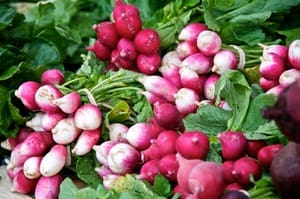

Summer’s bounty has reached its peak, or will soon. For most of the country, autumn’s arrival will mean the end of fresh, locally-grown produce sold at the farmers market or nurtured in backyard gardens. Sad. So sad.
But, hold on. Chin up. There are, fortunately, several ways to prolong the summer—at least when it comes to those tasty fresh veggies and fruits. Which method you use depends on your level of commitment and skill.
You have three basic options: freezing, canning or drying.

Tasty Freeze
Freezing is probably easiest so let’s start there. You’ll want to make sure your produce is fresh because the freezing process doesn’t kill the organisms that cause spoilage. For best flavor, you should always blanch vegetables before freezing.
To blanch, you boil or steam the vegetable for a short time and then submerge in ice water to halt the cooking process. This will also help destroy the bacteria and microorganisms. Try to avoid overblanching, as this can lead to loss of flavor and nutrients.
Most fruits may be frozen raw. Small whole fruits and berries can be frozen as is. Place them in a single layer on a baking sheet until frozen, then seal them in an air-tight freezer bag. Fruits such as apples, peaches, pears and apricots discolor quickly when frozen and can lose flavor when thawing. They should be mixed with some ascorbic acid (Vitamin C), which is available in most grocery stores that have freezing items. Lemon juice can also be used, but is not as effective and will add its own flavor to the fruit. Fruits that will be cooked when used may be steamed before freezing. Steam just until hot, then cool and freeze.
For more complete information on freezing fruits and vegetables, contact your local Extension Service office or visit this website.
Your Grandma Canned. Can You?
Canning is admittedly a bit more complicated, and caution must be used. You have to make sure a sufficient amount of heat is used to kill the microorganisms in the food. Sealing a jar of food before certain bacteria are killed can make you sick or worse. For low-acid foods such as vegetables, meat, poultry and fish, use only pressure canners, not boiling water canners, according to the advice of Extension Service offices.

Low-acid foods must be heated at temperatures higher than 212€F (the temperature at which water boils) in order to destroy the bacterium that causes botulism food poisoning. If botulinum bacteria grow inside a sealed jar, it can create a deadly toxin – just a taste of the food could be fatal.
For more detailed information on home canning contact your local Extension Service office, or visit the National Center for Home Food Preservation website.
Trying Drying
Drying is actually the oldest method of preserving food, though not necessarily the easiest. Way back when, people dried food using the heat of the sun, the bluster of the wind, and smoke from fire to preserve foods. Today, we use dehydrators purchased at Wal-Mart.
Drying removes water from food by circulating hot air through it, which prevents the growth of enzymes and bacteria.
Done properly, nutrients will remain intact using the drying method. Foods that contain vitamin A such as carrots, sweet potatoes and peppers, should be stored in dark places because vitamin A is light sensitive.
A dehydrator is recommended because foods that are not completely dried can become moldy. In preparing your food to be dried, you may have to blanch, steam or pre-treat it. A nonmetal bowl is best for pre-treating fruits and vegetables to prevent discoloring.
For more information on drying or dehydrating fresh vegetables and fruits, contact your local Extension Service office or visit this helpful website.

